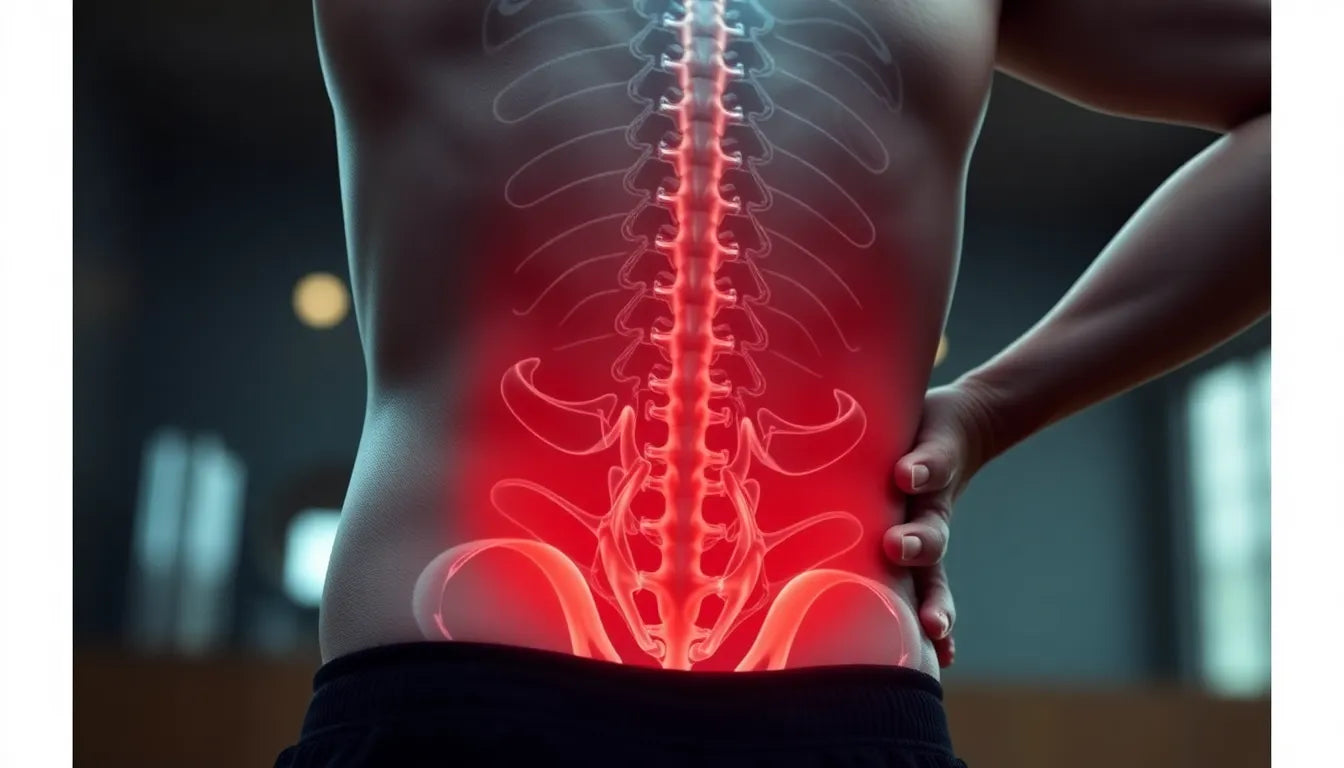Stretching exercises, or udstrækningsøvelser, play a crucial role in maintaining a pain-free and comfortable daily life. By incorporating regular stretching into your routine, you can alleviate common issues such as muscle tension and reduced flexibility. These exercises not only enhance your overall physical performance but also serve as a preventive measure against injuries.
the importance of stretching for daily comfort
In our daily lives, many of us experience muscle stiffness and tension due to prolonged periods of inactivity or repetitive movements. Stretching exercises are an effective way to counteract these issues, promoting better flexibility and reducing discomfort. By regularly engaging in stretching, you can enhance your range of motion, making everyday activities easier and more enjoyable. Furthermore, stretching is known to improve circulation, which can aid in muscle recovery and reduce the risk of injury.

Women's Posture Shirt™ - Black
Patented shirt that activates muscles, relieves pain and tension, and supports better posture all day.
understanding different types of stretching
There are three primary types of stretching exercises: static, dynamic, and PNF (Proprioceptive Neuromuscular Facilitation). Each type has its specific applications and benefits. Static stretching involves holding a stretch for a prolonged period and is typically used during cool-down sessions after exercise. Dynamic stretching, on the other hand, involves active movements that help to increase blood flow and is often used as part of a warm-up routine. PNF stretching is a more advanced technique that combines stretching and contracting of the muscles, often used by athletes and those looking to improve flexibility significantly.
why you should incorporate stretching into your routine
Incorporating stretching exercises into your daily routine offers numerous benefits that are supported by evidence. Regular stretching can significantly improve your flexibility, reduce muscle tension, and aid in injury prevention. It's important to choose the right type of stretching based on your specific activity or goal. For instance, dynamic stretching is ideal before engaging in physical activities to prepare the muscles, while static stretching is better suited for post-exercise to help relax and lengthen the muscles.
By understanding the importance and types of stretching exercises, you can tailor your routine to fit your personal needs and lifestyle, ultimately leading to a healthier, more flexible, and pain-free life.
static stretching exercises for daily relief
Static stretching exercises are essential for improving flexibility and reducing muscle tension, making them a valuable addition to any fitness routine. These exercises involve holding a stretch for a set period, allowing the muscles to lengthen gradually. Static stretching is particularly beneficial after workouts when the muscles are warm and more pliable, helping to prevent stiffness and promote recovery.
stående lårstræk (standing quadriceps stretch)
To perform the stående lårstræk, stand on one leg and grasp the ankle of your opposite leg behind you. Keep your knees together and gently tilt your pelvis backward to enhance the stretch in your quadriceps. This exercise is excellent for releasing tension in the thighs and improving knee flexibility. Aim to hold the stretch for 30–60 seconds on each side, completing 2–3 sets for optimal benefits.
siddende hasestræk (seated hamstring stretch)
The siddende hasestræk targets the hamstrings, which are often tight due to prolonged sitting. Sit on the floor with one leg extended and the other bent. Keep your spine long and lean forward from the hips until you feel a gentle stretch in the back of your thigh. Hold this position for 30–60 seconds and repeat for 2–3 sets to enhance flexibility and reduce muscle tension.
dynamic stretching exercises for warming up
Dynamic stretching exercises are an excellent way to prepare your body for physical activity. These movements increase blood flow, enhance muscle elasticity, and improve joint mobility, making them ideal for warming up before exercise. Unlike static stretching, dynamic stretches involve active movements that mimic the activity you're about to perform.
ben-sving (leg swings)
Ben-sving is a dynamic stretch that targets the hip flexors and hamstrings. Stand tall and swing one leg forward and backward in a controlled manner. This movement helps to increase the range of motion in your hips and legs, preparing them for more intense physical activity. Perform 10–15 swings per leg to get your body ready for action.
hoftecirkler (hip circles)
Hoftecirkler are another effective dynamic stretch, focusing on the hip joints. Stand with your feet hip-width apart and make circular movements with your hips. This exercise improves hip mobility and helps to activate the muscles around the pelvis. Perform 10 circles in each direction to ensure your hips are warm and ready for exercise.
pnf stretching techniques for advanced flexibility
PNF stretching, or Proprioceptive Neuromuscular Facilitation, is a more advanced method that combines stretching and muscle contraction to enhance flexibility. This technique is often used by athletes and those seeking significant improvements in their range of motion. PNF stretching involves both passive and active components, making it highly effective for increasing muscle length and flexibility.
knæleren (the lunge stretch)
Knæleren is a PNF stretch that targets the hip flexors and quadriceps. Begin in a lunge position with your back knee on the ground. Engage the glute of your back leg and press your hips forward to deepen the stretch. Hold this position for 30–45 seconds, repeating for 2–3 sets. This exercise is excellent for releasing tension in the hips and improving overall lower body flexibility.
diagonalen (diagonal stretch for piriformis/glutes)
The diagonalen stretch focuses on the piriformis and glute muscles, which can become tight from prolonged sitting or intense workouts. Cross one leg over the other and rotate your torso towards the crossed leg. This stretch helps to alleviate tension in the lower back and hips. Hold for 30–45 seconds and repeat for 2–3 sets to enhance flexibility and reduce discomfort.

Lumbar support belt
Adjustable lumbar belt offering support and relief for lower back tension and pain.
Incorporating these stretching exercises into your routine can significantly improve your flexibility, reduce muscle tension, and enhance your overall well-being. Whether you're looking to warm up before a workout or cool down afterward, these exercises offer a comprehensive approach to maintaining a pain-free and active lifestyle.
evidenced benefits and myths about stretching
Stretching exercises, or udstrækningsøvelser, offer numerous benefits that are well-supported by evidence. While static stretching is known to have a minimal impact on explosive power, its effect on Delayed Onset Muscle Soreness (DOMS) is negligible. However, stretching remains an important component of a comprehensive fitness routine, contributing to improved flexibility and reducing muscle tension.
It's essential to understand that stretching alone is not a panacea for injury prevention. Instead, it should be integrated with strength training, proper technique, and load management to effectively minimize injury risks. By incorporating these elements, you can create a balanced routine that supports both flexibility and strength.
safety and dosage guidelines for effective stretching
When practicing stretching exercises, it is crucial to focus on stretching to the point of tension rather than pain. This approach ensures that you are working within a safe range that promotes flexibility without risking injury. Remember to breathe deeply and evenly throughout the stretches to enhance relaxation and effectiveness.
For lasting improvements in flexibility, it is recommended to engage in stretching exercises 3–5 days per week. This frequency allows your muscles to adapt and lengthen over time, leading to more significant gains in range of motion and comfort.
integration with anodyne products
To enhance your stretching routine, consider integrating Anodyne products such as mobility bands and ergonomic aids. These tools can aid in achieving deeper stretches and provide additional support during exercises. By utilizing Anodyne's range of products, you can optimize your stretching practice and achieve better results.
For more resources and support, visit Anodyne's website to explore their offerings and discover how they can complement your exercise regimen.
frequently asked questions
does stretching reduce muscle soreness (doms)?
While stretching may not significantly reduce muscle soreness, it can improve flexibility and provide a sense of relief, making it a valuable part of any recovery routine.
can static stretching reduce strength before competition?
Static stretching might slightly reduce explosive strength temporarily. Therefore, dynamic stretching is recommended before competitions to prepare the muscles without compromising performance.
is stretching effective for injury prevention?
Stretching is one tool among many for injury prevention. It should be combined with strength training, proper technique, and load management for the best results.
Kilder
- Whiplashforeningen. (2018). "Hvidbog om whiplash: Piskesmæld - et modsvar til whiplash som funktionel lidelse."
- DAHANCA. (2014). "Nationale retningslinjer for parynks og larynks."
- REHPA. (2020). "Praksisbeskrivelser for rehabilitering."
- DCFH. (2024). "Vidensrapport om let hovedtraume hos voksne."
- Undervisningsministeriet. (2023). "Samlede læseplaner."
- SUFO. (2020). "Forebyggelse og sundhedsfremme målrettet ældre."


















